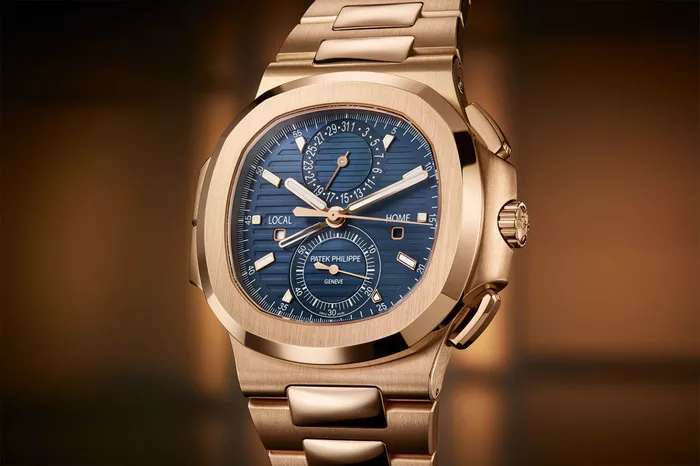In the realm of luxury timepieces, Patek Philippe stands as a beacon of precision, elegance, and timeless craftsmanship. As enthusiasts and collectors delve into the intricacies of these horological masterpieces, a common question emerges—Do Patek Philippe Watches Use Batteries? This exploration delves into the heart of Patek Philippe’s commitment to traditional watchmaking, the influence of technology, and the dynamic interplay between tradition and innovation in the world of haute horlogerie.
The Mechanical Legacy: A Symphony of Tradition
1. Pinnacle of Craftsmanship: Mechanical Movements in Patek Philippe Watches
At the core of Patek Philippe’s heritage lies an unwavering commitment to mechanical excellence. The majority of Patek Philippe watches, including iconic models like the Calatrava and Nautilus, rely on intricate mechanical movements. These movements, comprising gears, springs, and balance wheels, draw their energy from the motion of the wearer’s wrist, exemplifying the pinnacle of traditional watchmaking craftsmanship.
2. A Dance with Precision: Automatic Movements and Self-Sufficiency
Patek Philippe’s embrace of automatic movements further underscores its dedication to traditional craftsmanship. Automatic movements, also known as self-winding movements, harness the kinetic energy generated by the wearer’s motion to wind the mainspring. This self-sufficiency eliminates the need for batteries, allowing wearers to revel in the perpetual precision of mechanical excellence.
Quartz Technology: A Technological Interlude
Quartz Precision: A Contemporary Touch in Select Models
While Patek Philippe is synonymous with mechanical mastery, some models within its repertoire, notably the Twenty~4 collection, incorporate quartz movements. Quartz watches are distinguished by their precision, low-maintenance nature, and reliance on batteries. Patek Philippe’s foray into quartz technology represents a nuanced approach, marrying tradition with contemporary precision.
The Verdict: The Power Source of Patek Philippe Watches
1. Mechanical Movements: The Heartbeat of Tradition
The majority of Patek Philippe watches, including the revered Grand Complications and Calatrava models, do not use batteries. Instead, they draw their power from meticulously crafted mechanical movements, reflecting the brand’s commitment to preserving the tradition of watchmaking that has defined Patek Philippe for centuries.
2. Quartz Movements: Precision Powered by Batteries
In contrast, specific models within the Patek Philippe lineup, such as the Twenty~4 collection, leverage quartz movements. These watches rely on batteries to power the oscillations of a quartz crystal, ensuring unparalleled precision. While the use of batteries in quartz watches marks a departure from the traditional mechanical approach, it aligns with contemporary demands for accuracy and low-maintenance timekeeping.
Decoding the Quartz Experience: Battery Life and Replacements
1. Lifespan of Quartz Batteries: Factors at Play
For Patek Philippe watches equipped with quartz movements, the lifespan of the battery becomes a key consideration. The longevity of a quartz battery is influenced by factors such as the type of battery used, the frequency of wear, and the presence of additional complications. Patek Philippe, known for its commitment to excellence, employs high-quality batteries to ensure extended durability.
2. Battery Replacements: A Necessary Maintenance Aspect
While the quartz battery lifespan is notably longer than that of traditional watch batteries, it is not infinite. Patek Philippe recommends replacing the battery every 2 to 4 years, depending on usage. Entrusting this task to authorized service centers ensures the seamless replacement of the battery without compromising the integrity of the watch.
Conclusion: Navigating the Temporal Tapestry
In the captivating tapestry of Patek Philippe’s horological legacy, the question of whether its watches use batteries unfolds as a nuanced exploration into the brand’s ethos. The resounding verdict reveals a dual approach—while traditional mechanical movements, devoid of batteries, pay homage to centuries-old craftsmanship, quartz technology introduces a contemporary touch, offering precision powered by batteries.
As collectors and enthusiasts navigate the temporal landscape of Patek Philippe, they engage in a dialogue between tradition and innovation, where each tick of the mechanical movement or the regulated oscillations of a quartz crystal represents a chapter in the brand’s enduring narrative. The choice between mechanical and quartz becomes a matter of personal preference, aligning with individual lifestyles and a reverence for either tradition or modernity.
In the grand symphony of Patek Philippe watches, whether driven by the intricate dance of gears or the precision of a battery-powered heartbeat, the essence remains unchanged—a celebration of time, tradition, and the perpetual pursuit of horological excellence. Patek Philippe’s dual approach echoes the brand’s adaptability to the times, ensuring that each watch, irrespective of its power source, becomes a timeless masterpiece that transcends fleeting moments in the ever-evolving landscape of haute horlogerie.

